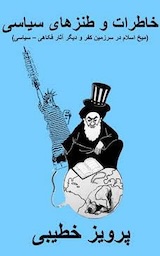The New Yorker:
You can take the platform away from American users, but it is far too late to contain the habits that it has unleashed.
By Kyle Chayka
On April 24th, after years of talks about a TikTok ban, President Joe Biden committed to remaking the platform’s existence in the United States. A foreign-aid package that he signed into law, and that passed in the House and the Senate with strong majorities, included funding for Ukraine, Israel, and Gaza, plus a bill that will force the digital platform to either sell itself to an American entity or be banned on a national level. ByteDance, TikTok’s Chinese parent company, now has about nine months to divest. In his remarks after signing the package, Biden didn’t directly refer to the social-media platform, though he did say that the foreign aid would “make America safer,” a notion that also helps explain the government’s reasoning on the TikTok ban.
Over the past several years, TikTok has become something of a symbol both of fears over China’s rise as a dominant international power and of concerns that social media as a whole is harming children. The existential threat posed by the new legislation is nothing new. In 2020, the company put forward an elaborate plan to give twenty per cent of its platform to Walmart and Oracle, which would have hypothetically insured the data’s security and the company’s independence from the Chinese government. That plan was eventually shelved, in 2021, owing to security concerns. Since then, however, the platform has only grown more popular among U.S. users, whom the company has tried to convert to activists on its behalf. Earlier this year, users in the U.S. who opened the app found a pop-up requesting that they “tell Congress what TikTok means to you,” along with a button to directly phone elected officials. The subsequent wave of angry and uninformed calls, recounted to Politico by lawmakers’ offices, may have actually encouraged legislators to act on the proposed ban.
Go to link










Comments